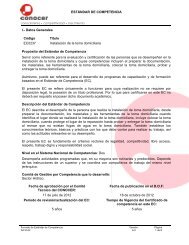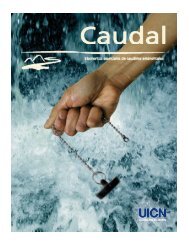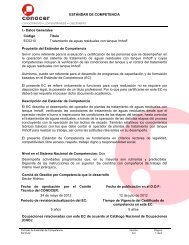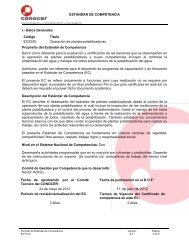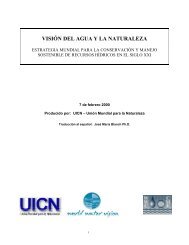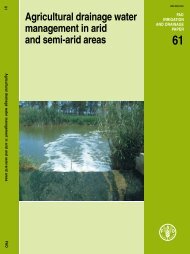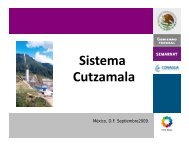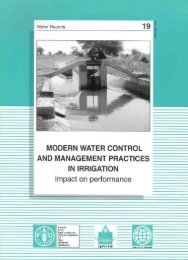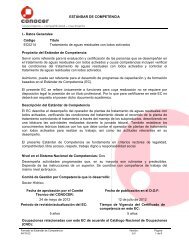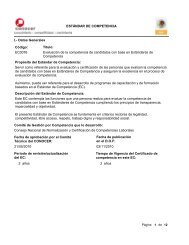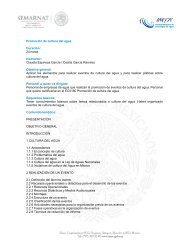Document - IUCN
Document - IUCN
Document - IUCN
You also want an ePaper? Increase the reach of your titles
YUMPU automatically turns print PDFs into web optimized ePapers that Google loves.
ecosystems and other natural systems. 13This holistic approach to water management is further emphasized, in the requirement ofintegrated management plans for the conservation, use and development of water resources, 14and the clear appreciation for inter-agency co-ordination and basin-level planning. 15Inter agency co-ordination is to be effected through an Inter-Departmental Advisory Committee,that includes the Forest Department, but not the Ministry in charge of the subject of Environmentor the Department of Wildlife Conservation - the two agencies with the primary mandates overwetlands.Nevertheless, this Act is the only legislation currently in force, that seeks to develop a multisectoralapproach to water management with a clear mandate for diverse interests, beyondtraditional anthropocentric water uses, to be included in the planning process. Unfortunately, theWater Resources Board has not been an active player in national water management planning,with the result that the provisions described above have been under-utilized.National Water Supply and Drainage Board Act, No. 2 of1974This Act establishes the National Water Supply and Drainage Board for the purpose of providinga supply of fresh water for public, domestic and industrial purposes 16 and for operating publicsewages systems. 17 The Board supplies fresh water, in both urban as well as rural areas,primarily through the tapping of surface water, and in some instances, through the extraction ofground water from aquifers. For this purpose, the Act empowers the Minister, with theconcurrence of the Minister in Charge of Local Government, to declare by Order, any area to bean area of authority of the Board. 18Despite the Board’s mandate having clear implications for the sustainability of wetlands thatsupply the fresh water, the Act, and its amendment in 1992, do not contain provisions, requiringprior consultation with agencies and other affected or interested parties, when planning watersupply schemes. The Acts also do not contain provisions that lay down principles, such as therecognition of watersheds, to be applied in such situations. Furthermore, as only irrigationschemes (water supply schemes connected to agriculture) are Prescribed Projects under theNational Environment Act (see below), these schemes are also not subject to EnvironmentalImpact Assessments, and thus the certain and potential environmental impacts of waterextraction from a wetland cannot be ascertained.Nevertheless, in practice access to such areas ( the Labugama lake for example) is restricted,requiring permission from the Board. Such protection however is likely to be driven by concernsover water quality than any environmental considerations.National Environmental Act , No 56 of 1980 and relevantregulationsThe relevance of the National Environmental Act (NEA), is derived from Part IV C whichestablishes the requirement of conducting Environmental Impact Assessments (EIAs) and Initial13 S. 12(f)(ii)14 S. 12(g)15 S. 12 (h), (j) and (k)16 S. 16(i)17 S. 16(ii)18 S. 15(i)The Value of Traditional Water Schemes:Small Tanks in the Kala Oya Basin, Sri Lanka21



